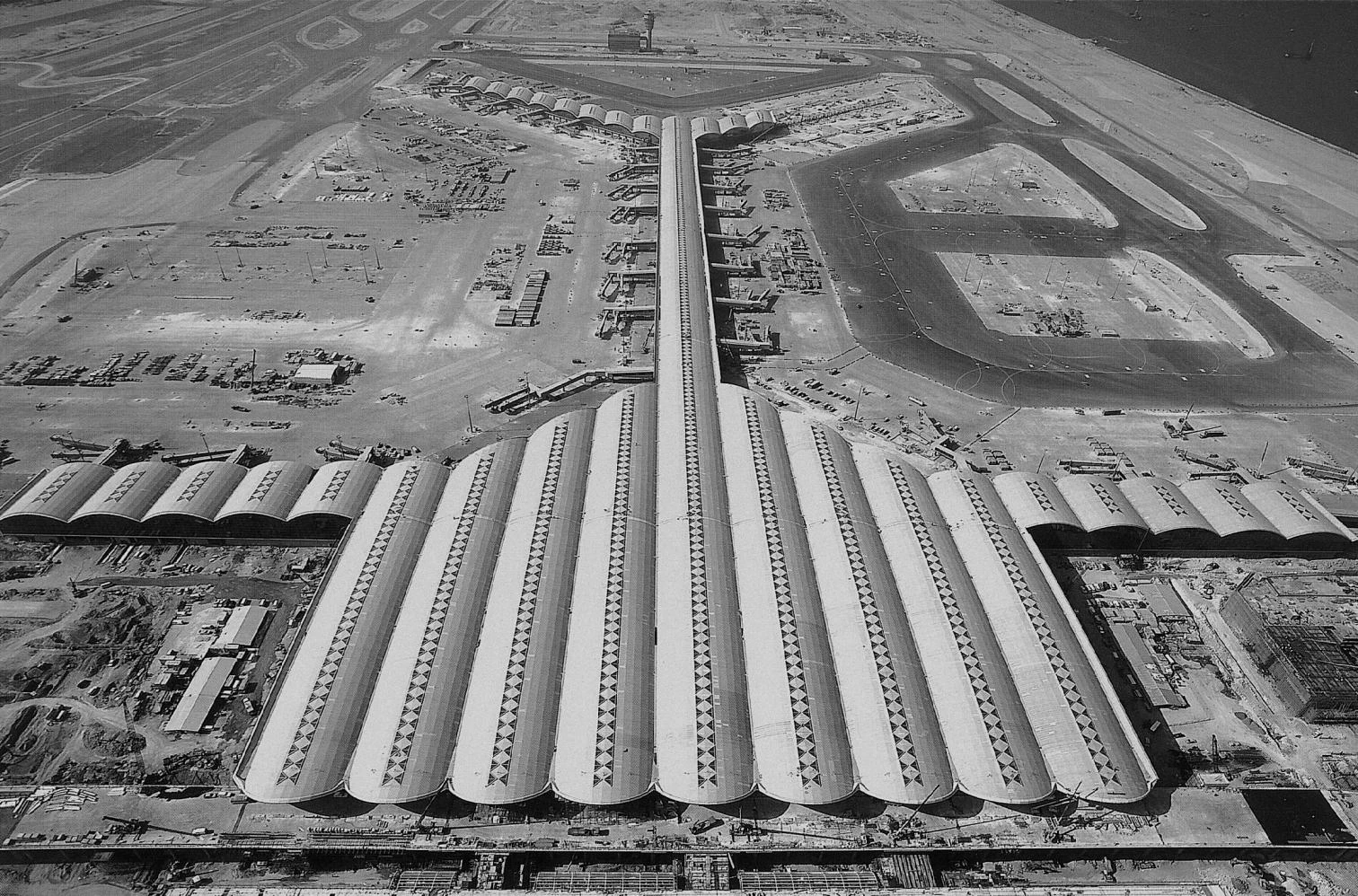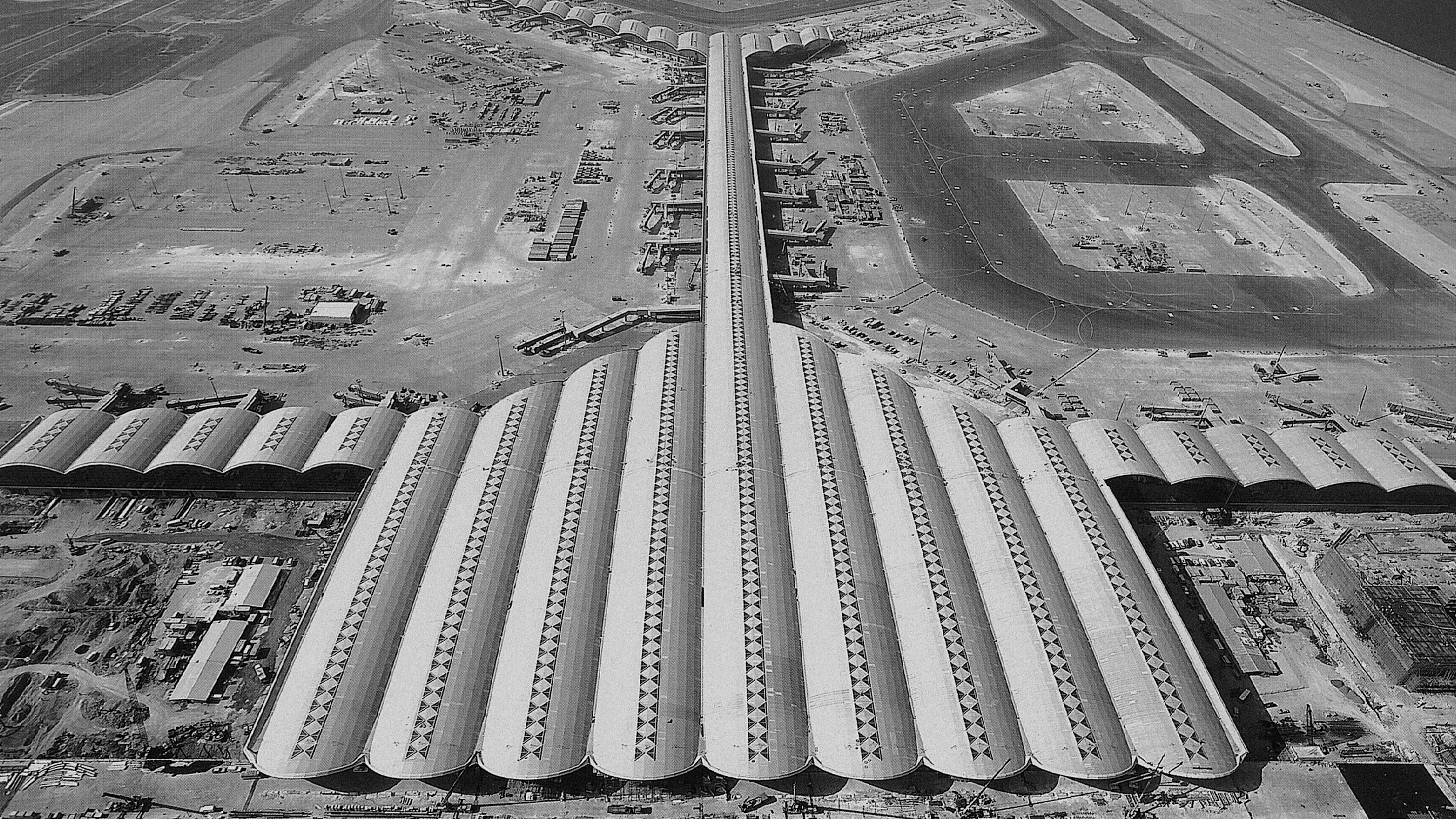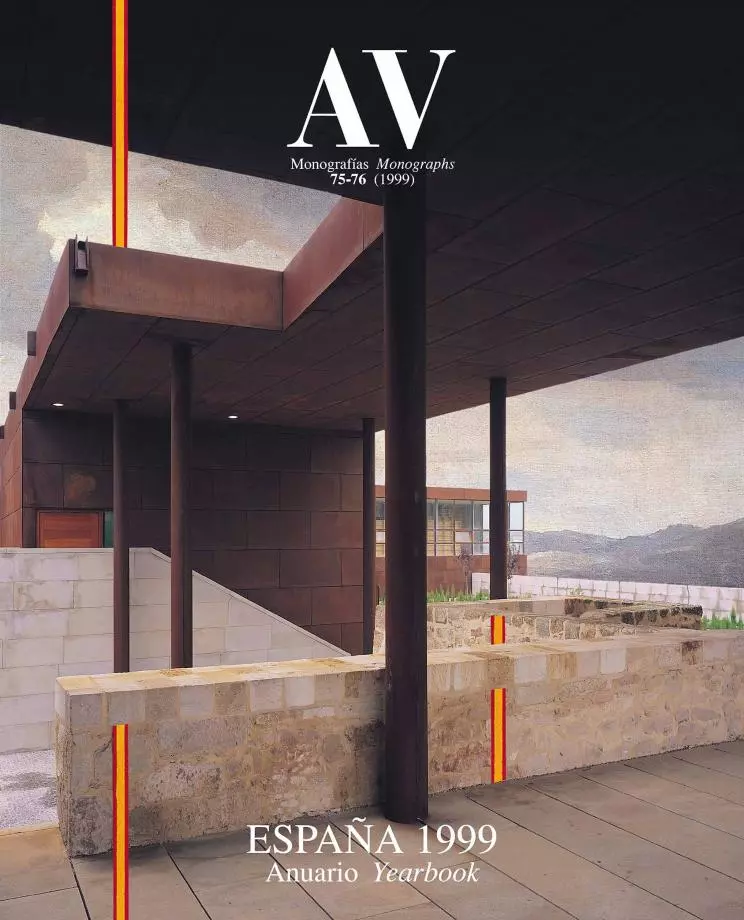
Hong Kong Airport is the largest construction of the century, but it transmits an image of lightness, which is helped by the uniform direction of the slender, interminable vaults of the roof.
It is the largest work of the century, and could also be said to be the lightest. The international airport of Hong Kong at Chek Lap Kok is a titanic construction. Summed up in figures, it produces in us the same sense of unease that certain astronomic magnitudes do, unable as we are to visualize their size and losing our grasp of scale amid dizzying jungles of repeated zeros. Such colossal dimensions provoke a paradoxical mix of anxiety and indifference. The over 500,000 square meters of the terminal designed by Norman Foster are the finale of an airport project that has cost the city US$155,000 million. On a man-made island, 18 hectares of vaults cover the world’s largest terminal, with an underground luggage area that could take in five jumbo jets and a connection tunnel as wide as a highway, thanks to an operation that has involved the simultaneous activity of 21,000 operators, 230 consultants and as many as 50 draftsmen who have produced more than 2,000 plans on just the structure, not to mention 370,000 cubic meters of concrete, 67,000 tons of steel rods and the largest glass, stone and conveyor belt contracts ever signed.

In contrast to these gigantic figures, the building when seen from the air gives an impression of lightness, resembling a rather large-headed paper plane with small wings, a slim fuselage and a pitch-fork-shaped tail, all cut out from corrugated cardboard and posed weightlessly on the ground like an origami sculpture that lands better than it takes off. Such an image is enhanced, on one hand, by the uniform direction of the slender steel vaults, which serves to emphasize the longitudinal frieze of the skylights and never alters, not even when the tail forks out, and on the other hand, by the setback of the glass facade, which leaves the edge of the glazing free so that the undulating roof floats over the concrete plain of the runways. And the same goes for the interior, which is luminous and light like a marquee: the 36-meter spans of the long vaults are lightened by the svelteness of the cylindrical pillars, the fineness of the struts, the suspended profile of the glass sheets and the blurred clarity of the interminable skylights, which create a severe and serene, silver-gray interior space.


Solutions tried in previous projects have been employed in the airport on an incomparably larger scale. Left, a cross section of the Faculty of Law at Cambridge University.
Many characteristic features of this building come from an earlier Foster project, London’s Stansted Airport, where the architect had unloaded the roofs, transferring the airconditioning system from their usual position above the ceiling to the underflooring. In this way he not only made the machinery more accessible, but also rendered the roofs lighter and more permeable to the sun’s rays. This model, much imitated, has been repeated in Chek Lap Kok at an incomparable scale: the services plant alone takes up twice the total area of Stansted, and the structural module, which was 18 x 18 meters in London, is here four times larger. Moreover, the Chinese airport is equipped with formidable communication and control systems: 17,000 monitors, 12,000 smoke detectors, 2,000 computer screens and 900 electronically-powered security doors for 50,000 employees. But over and above the carefully planned signs, the traveler’s best view will be of the building itself, clearly organized as it is in three levels for departures, arrivals and luggage, and with the linear skylights defining a single direction in the immense hypostyle concourse.

Six years ago the site was an abrupt rock whose crests rose a hundred meters above sea level. It was then, as a proof of confidence in the future of Hong Kong after its return to Chinese hands, that this colossal project was launched, and a horizontal, 20-square-kilometer island emerged, pollarding an islet four times smaller. The resulting platform is now an airport that has half the world’s population less than four hours of flying time away, that will serve 35 million passengers a year starting the 6th of July, and is designed to increase its capacity to 87 million in the future. It is this future that Bill Clinton will address at the end of the month when, coinciding with the first anniversary of the colony’s devolution and as part of a controversial tour of China, he visits the city and opens its airport.

Norman Foster has combined his two passions, architecture and aviation, in the American Air Museum at Duxford, an elegantly shaped hangar built as a huge light concrete shell.
Plunged in the monetary and stock market storms of Asia and still struggling with the political ambiguity of its recently launched organic democracy, Hong Kong confronts the future with the muscular vitality and secret emotions shown in The Chinese Box, a portrait of the city in transition filmed by Wayne Wang with the perception and restraint of a documentary. Who knows if the American president will pronounce the historic phrase he failed to deliver in Berlin, if he will affirm in the presence of Martin Lee that he, too, is a Hong Konger. Or if he will choose to proceed with the diplomatic reserve demanded by Beijing. But the inauguration of this at once titanic and ingravid work will in itself provide a material metaphor for Asian vigor and subtlety. Cyclopean like the Great Wall and light as a paper dragon, the new airport stretches its buoyant waves over the artificial geography of an invented island, and those airy vaults rest on the marine platform like a curly comet about to take flight.

Flights on Land
As an architect and an aviator, Norman Foster designs buildings at the same speed with which he flies planes. Such accelerated productivity makes it difficult to keep track of his career. Hardly has he completed Europe’s tallest building in Frankfurt than he is seen struggling in London for permission to go ahead with a tower which would beat his own record, beginning a skyscraper in Rotterdam, and proposing another on Madrid’s Plaza de Castilla; just as he wins the competition for a huge viaduct in France he caps another for a bridge over the Thames; hardly is he done with a law faculty in Cambridge than we find him finishing a business school in Aberdeen; finally, while inaugurating the Congress Center of Glasgow he announces an opening date for the one he is building in Valencia. But in this feverish flow of projects, there is probably no one as elemental and moving as the American Air Museum in Duxford: a huge light shell that brings together a collection of historical American aircraft on the site of an old military airfield, terminated after 12 years of vicissitude. This monumental and refined hangar is the exact oeuvre of a pilot who has housed his passion in the most rigorous and elegant building of his recent career.






